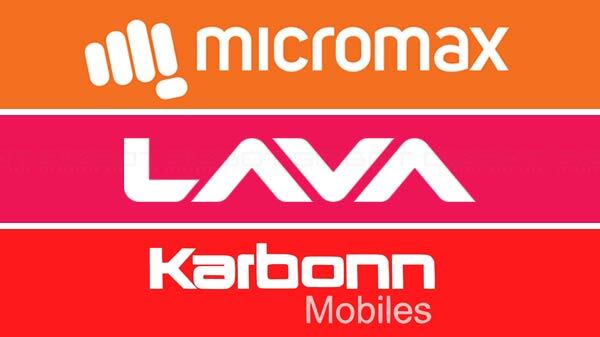Indian smartphone market is completely dominated by Chinese companies as the likes of Oppo, Vivo, Xiaomi and OnePlus command a majority of the Indian smartphone market. There was a time when Indian brands like Micromax, Karbonn, and Lava were the flavour of the nation before the Chinese companies beat the Indian companies both in terms of price and technology. As momentum for boycotting Chinese products gathers space in the backdrop of the tense border face-off at the LAC, it can well prove to be a revival moment for Micromax, Karbonn, and Lava.
In the first quarter of 2020, Xiaomi captured 30% of the Indian smartphone market by recording a 6% year-on-year growth. Close on the heels of Xiaomi was Vivo, who recorded a whopping 40% year-on-year growth as it occupied 17% of the Indian smartphone market in the first quarter. Oppo now occupies 12% of the Indian market and even newer brands like Realme are making waves as it recorded a 119% year-on-year growth.
OnePlus has managed to capture the imagination of Indian youth and now commands a whopping 33% market share if the premium segment beating the likes of tech giants Apple and Samsung.
The statistics show how deep Chinese companies have penetrated the Indian smartphone market by leading in technology and more importantly, introducing smartphones at dirt-cheap prices as compared to Samsung and Apple.
It was not long ago that the likes of Micromax, Karbonn and Lava were leading the way and were spending millions in their marketing too by taking up sponsorships in the Indian Premier League. However, the entry of Chinese companies acted as a death knell for the Indian troika.
It seems that the troika is all set to make a comeback as Micromax, Karbonn and Lava are preparing to announce new smartphones in India which will be launched between entry-level to mid-range segment.
Micromax has gotten increasingly active on Twitter and has asked its fans to gear up as the company is all set to make a return in the Indian smartphone market so as to cash in on the rising anti-China sentiment in the country.
A device with premium features, thoroughly modern look and budget friendly, how does that sound Nani Kishor?🙂 Stay tuned. #Micromax #MadeByIndian #MadeForIndian
— IN by Micromax (@Micromax__India) June 18, 2020
Hi, Shubham. You are soon going to hear from us. Stay tuned to our social media channels for the updates. #MadeByIndian #MadeForIndian #Micromax
— IN by Micromax (@Micromax__India) June 19, 2020
Hi, Jagruti. Definitely, we're gearing up for this and will soon come up with something big. Stay tuned. Appreciate your love and support. #Micromax #MadeByIndian #MadeForIndian
— IN by Micromax (@Micromax__India) June 19, 2020
It is clearly visible from the company’s tweets that it is planning to announce a comeback in a big way and the replies also show that Indians eagerly want to buy India made smartphones in a bid to hurt China economically. According to few reports, the company plans to soft launch three new smartphones by the end of July with all of them being priced under Rs 10,000.
Meanwhile, Karbonn Mobiles is slated to launch two new smartphones by the end of September with both of them being priced under Rs 10,000 and the company is working on a clean and robust UI which is the hallmark of the Chinese companies. The upcoming Lava Z66 has already been spotted on GeekBench which signals an imminent release.
In a significant development, after the Central government’s policy announcements, Lava has also announced that it will be shifting its China operations to India and will invest Rs 800 crore in the next five years to scale up its operations in India.
“We had around 600-650 employees in China for product design. Now we have shifted designing to India. Our sales requirements for India were met by our local plant. We used to partially export mobile phones from China to the rest of the world, which will now happen from India,” said Chairman and Managing Director of Lava International, Hari Om Rai. He further added, “My dream is to export mobile devices to China. Indian companies are already exporting mobile chargers to China. The production linked incentive scheme has ended our disability factor vis-a-vis export from China. Therefore entire operations will now be carried from India.”
It seems that this is a revival moment for the Indian companies as they are capitalising on the anti-China sentiment as there are growing calls across the country for boycotting Chinese goods, including Chinese smartphones.


































